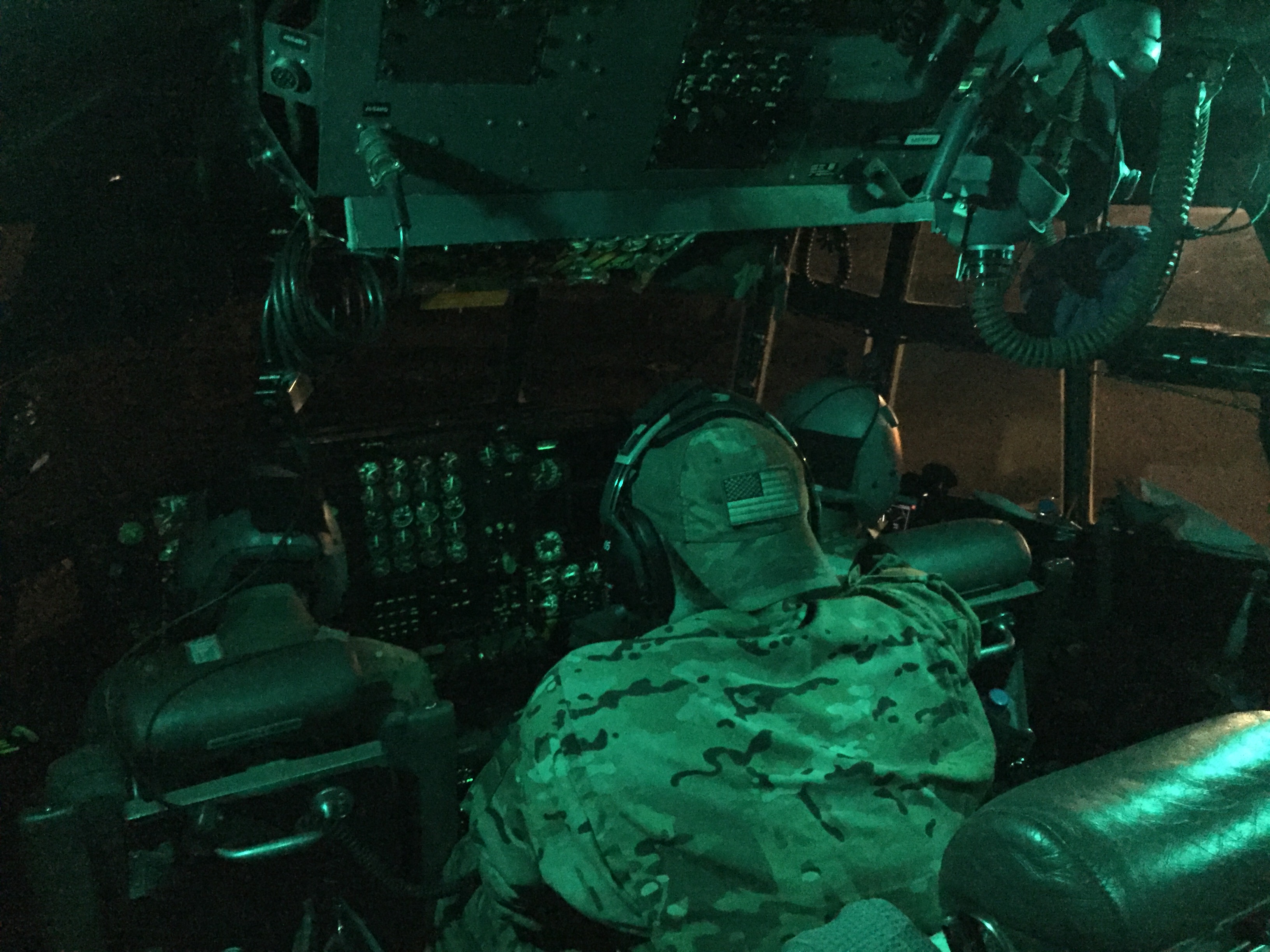Capt. Jason Riggs and Capt. Brian Nanko, the pilot and co-pilot, fly a C-130 to Camp Taji, Iraq, from an undisclosed location in Southwest Asia. SrA. Jake Dawson, the flight engineer, sits behind the pilots. Air Force Magazine photo by Jennifer Hlad.
CAMP TAJI, Iraq A C-130 packed full of passengers and cargo touches down on a dark airstrip on a cold December night. Airmen hustle to unload the plane, then quickly reload for the return flight.
The aircraft is only on the ground for about 15 minutes before it heads back to the busiest aerial port in the US Central Command area of operations. But in a few hours, it will soar over the lights and oil refineries of Iraq again, for a second run to the same airfield.
This flight, the crew says, is “about as normal as it gets.”
The tightknit crew—made up entirely of Air Guardsman deployed from the 182nd Air Wing in Peoria, Ill.—is part of the 737th Expeditionary Airlift Squadron, 386th Air Expeditionary Wing. They arrived in Southwest Asia in late October and have been flying together since.
SrA. Jake Dawson, the flight engineer, describes the squadron’s mission as “resupplying guys who are forward.”
Between the first and second flights of the night, Dawson told Air Force Magazine that he enjoys seeing what cargo the crew will be transporting.
“It’s kind of exciting to see what you’re taking to these dudes to help out,” he said. “It’s a pretty good feeling.”
Co-pilot Capt. Brian Nanko agreed, adding that they get the “warm and fuzzies” when they are taking ammunition to forces fighting ISIS, because that means “those guys are getting the stuff they need.”
Nearly all of the “throughput for all of the forces that are fighting against Daesh in Iraq” comes through the undisclosed base in Southwest Asia, said Col. Charles Bolton, commander of the 386th AEW.
“We move somewhere around 8,000 passengers and about 8,000 tons of cargo” each month, a dramatic rise from 2014, Bolton said.
On this night, the crew loaded blood, ammunition, generators, and luggage onto the plane at dusk, then dropped to the tarmac for 25 push-ups. Nanko called the pre-flight push-ups “kind of a wake-up call, a little icebreaker.”
They’re also good luck, Dawson said.
Earlier in the deployment, after an extra pilot flying with the crew failed to complete the push-ups, the plane hit 26 birds, stranding the crew in a different unidentified location for a few days.
The bird incident wasn’t the only issue the crew has had. Dawson explained that within the first month of a deployment, “with how hard we push” the C-130s “and how far we fly, … the planes start to deteriorate.”
For example, the crew has had to shut down “a couple of engines” during a mission, Dawson said. They had an auxiliary power unit fire not long before this flight, Nanko added, but “we still landed, completed the mission,” he said. “It was fine.”
One of their first flights to Iraq was what is known as the “pain train,” wherein the plane lands at every air base in the country before heading home.
It makes for a long night, Nanko said, but it also gave them a good welcome to the region.
By contrast, he said, the Taji route is “about our shortest night.”

